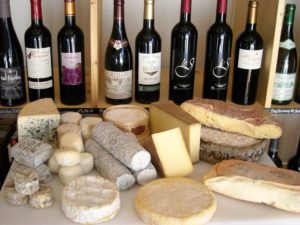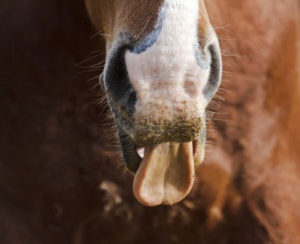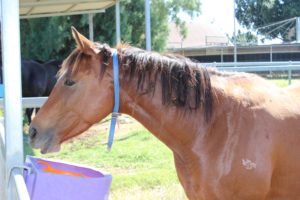European Workshop for Equine Nutrition 2016 (Part 1)
 Founder of MB Equine Services, Mariette van den Berg, travelled in June to Europe to attend two very special equine science conferences – the European Workshop on Equine Nutrition (EWEN) and the International Society for Equitation Science (ISES) Conference.
Founder of MB Equine Services, Mariette van den Berg, travelled in June to Europe to attend two very special equine science conferences – the European Workshop on Equine Nutrition (EWEN) and the International Society for Equitation Science (ISES) Conference.
At both these conferences, Mariette presented results from her PhD project that focuses on behavioural mechanisms of diet selection by horses. In this new series, she will be featuring a selection of interesting topics and findings from her own project, and other researchers who attended the 8th bi-annual EWEN, which was held in Dijon, France.
The bi-annual European Workshop on Equine Nutrition was first held in 2002 in Dijon and, after 2004, has been touring through Europe, visiting Italy in 2006, Finland in 2008, the United Kingdom in 2010, Portugal in 2012 and Germany in 2014, before returning again to France this year.
EWEN is recognised as Europe’s leading scientific event in equine nutrition, and brings European and international scientists together to share scientific information, disseminate technical expertise amongst the wider horse industry and foster innovation. Each conference has a theme and this year EWEN 2016 was entitled ‘Taste, Nutrition and Health of the Horse’.
 This focus was chosen because of the location, which is home to the Centre for Taste, Food and Nutrition Sciences (CSGA). Of course, Dijon is also very conveniently located in the Burgundy region, which is famous for its wine and great cheeses!
This focus was chosen because of the location, which is home to the Centre for Taste, Food and Nutrition Sciences (CSGA). Of course, Dijon is also very conveniently located in the Burgundy region, which is famous for its wine and great cheeses!
‘Taste’ is a conference topic which has not been studied extensively in horses and is very applicable to my PhD project, which investigated factors that influence foraging behaviour and diet selection in horses, with a main focus on orosensory (smell, taste, texture) and post-ingestive (nutrients) feedback mechanisms.
This month, I present a summary of two presentations, the first is one of my presentations that described some of the findings from our peer reviewed paper entitled ‘Influence of odour, taste and nutrients on feeding behaviour and food preferences in horses’. This full study has been recently published in the Applied Animal Behaviour Science Journal, which you can access here. The second is a fascinating study aimed at finding alternative wormers to fight the alarming resistance parasites are developing to anthelmitic drugs and tested plant secondary compounds.
1. Effect of flavours and odours on diet intake in horses
In one of our earlier studies that examined the acceptance of nutritious novel forages, we had observed horses almost invariably consume only small quantities of food when it is presented for the first time (van den Berg et al., 2016a). The cautious sampling of new food types is referred to as neophobia (‘fear of new’) and has been suggested as an innate herbivore survival mechanism for avoiding the over-consumption of toxic plants in the wild (Provenza and Balph, 1988).
 While feed neophobia is usually described in horses as “fussy eaters”, similar behaviour occurs in many animal species, including humans! Commercial horse feed manufacturers commonly use flavours to overcome this feed neophobia, but there are limited studies that have investigated how well horses accept these flavours.
While feed neophobia is usually described in horses as “fussy eaters”, similar behaviour occurs in many animal species, including humans! Commercial horse feed manufacturers commonly use flavours to overcome this feed neophobia, but there are limited studies that have investigated how well horses accept these flavours.
Flavours have been added to encourage the intake of water, unpalatable anthelmintic drugs (wormers), as well as concentrates and supplements with different effects. For example, a study by Burton et al. (1983) used apple, lucerne, caramel and anise-molasses to mask the drugs levamisol and piperazine in a concentrate diet, and showed only apple, lucerne and caramel were partially effective, not anise-molasses.
Goodwin et al. (2005a) examined the effect of 15 food flavours on concentrate selection by stabled horses and showed the two most preferred flavours (fenugreek and banana) could be used to encourage the intake of an unpalatable mineral pellet. However, the characteristics of what flavours are most useful have not been well defined.
For example, flavours can be classified as non-nutritive, providing only an aromatic and/or non-caloric taste (artificial or natural sweetener), or nutritive, which can include an aromatic and/or taste that contains calories.
In another study, Goodwin et al. (2005b) reported in multiple choice trials and in the short term, horses can respond to sensory variety in concentrate diets that differ in flavours (odour and caloric taste) and/or formulations (nutrients), and they select from preferred and less preferred food choices.
Nevertheless, it was still unclear how horses respond to non-nutritive flavour changes over a longer period when they are presented with a single diet. This is why, as part of a larger study and over a period of four weeks, we examined the responses to flavour (odour) changes on diet intake. Our main objective was to assess the diet/odour acceptance and variability in intake after each diet/odour introduction was made.
In our study, we offered four fibre pellet diets to 16 adult horses. These diets were similar in digestible energy, but differed in crude protein (CP) levels (Low CP; 14% and High CP; 27%), with one of these levels including a non-caloric natural sweetener + taste.
 The four diets (LP, LP+, HP and HP+) were presented in the order from low to high palatability over four weeks (five days on each diet) and were linked to four non-caloric odours (spearmint, banana, cinnamon and coconut).
The four diets (LP, LP+, HP and HP+) were presented in the order from low to high palatability over four weeks (five days on each diet) and were linked to four non-caloric odours (spearmint, banana, cinnamon and coconut).
These four odours were chosen from different flavour classes (i.e. nut flavour, fruit flavour, spice flavour and herb flavour) to avoid similar characteristics and confuse horses. The aim of the adaptation phase was to allow horses to learn about the flavour-to-post-ingestive associations of each diet – this was important for later preference testing and diet ranking.
To make sure all diets and odour combinations were tested, the horses were divided into four groups, which allowed for randomisation of the odours to the four diets (Latin Square 4 x 4). This meant each group received its own unique odour-diet combinations throughout the adaptation phase and during further preference testing.
The odours were sprayed onto the feed before being presented to the horses. Horses were offered 400g per diet/day. The intake was recorded daily and calculated to proportions consumed out of the total food offered.
Our results showed with each introduction of a new odour/diet, an initially large variation in intake was recorded, with some horses showing a neophobic response, while others exhibited no apparent recognition of the odour being new.
Individual variability reduced within 3-4 days for all four odours, with horses consuming between 80-100% of the diet.
 This adaptation of 3-4 days to new diet / odour was also observed in our previous study (van den Berg et al., 2016b); suggesting odour cues can have a strong initial influence on feed intake by horses and highlights the important role of smell in diet selection.
This adaptation of 3-4 days to new diet / odour was also observed in our previous study (van den Berg et al., 2016b); suggesting odour cues can have a strong initial influence on feed intake by horses and highlights the important role of smell in diet selection.
Even so, we conclude that non-nutritive odours can be safely introduced to equine diets without upsetting intake patterns for prolonged periods of time. In addition, once horses are familiar with specific odours (that are linked to well-liked diets), you can use this odour as a cue to ease the transition from familiar food to more novel or less palatable foods.
References
- Burton J.H., Price D.J. and Aspinal J. 1983. The effect of feed flavour and feed consumption in horses. In Eight Equine Nutrition and Physiology Symposium Lexington, KY, USA.
- Goodwin D., Davidson H.P.B. and Harris P. 2005a. Selection and acceptance of flavours in concentrate diets for stabled horses. Applied Animal Behaviour Science 95, 223-232.
- Goodwin D., Davidson H.P.B. and Harris P. 2005b. Sensory varieties in concentrate diets for stabled horses: effects on behaviour and selection. Applied Animal Behaviour Science 90, 337-349.
- Provenza F.D. and Balph D.F. 1988. Development of dietary choice in livestock on rangelands and it’s implications for management. Journal of Animal Science 66, 2356-2368.
- van den Berg M., Lee C., Brown W.Y. and Hinch G.N. 2016a. Does energy intake influence diet selection of novel forages by horses? Livestock Science 186, 6-15.
- van den Berg M., Lee C., Brown W.Y., Giagos V. and Hinch G.N. 2016b. Acceptance of novel food by horses: the influence of food cues and nutrient composition. Applied Animal Behaviour Science, 183, 59-67.


Follow Us!